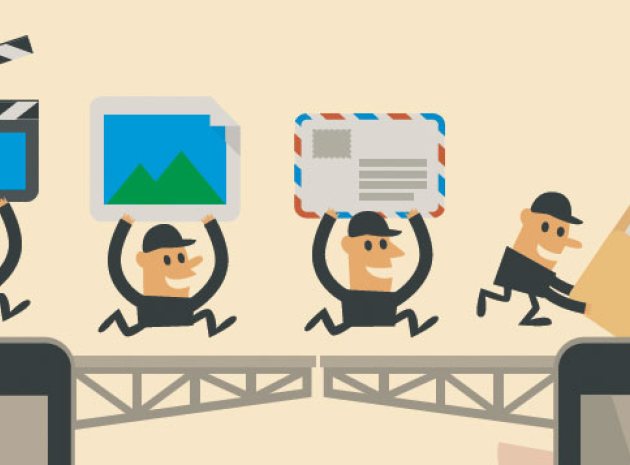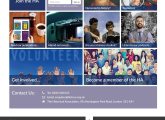Hands mobile devices offer all kinds of exciting learning opportunities – but have you considered the ways they could specifically be used to support students with sen? Dave Foord spells it out…
The advantages and disadvantages of using mobile devices such as smartphones and tablets in education have been discussed in this magazine and many others; but one area that is often overlooked is the accessibility benefits that these devices bring to learners.
A few years ago if a learner had a disability or specific learning need, one solution would be to invest in either specialist equipment or software to help that individual. This approach worked, but had many problems. For example, the cost of the equipment or software was often very high, and only solved one particular problem; it often wasn’t always that mobile, so only worked in certain areas; it created a stigma for the learner who had to always use ‘the special computer’; and most significantly, it tended to create a dependence on that particular technology, which may not have been available to the learner at his or her next place of study or employment.
The invention of the smartphone and tablet devices (iPad, Android, or Microsoft Surface) has revolutionised disability support, as most of the adaptation support required for learners can be achieved with these devices often using free or very cheap apps. The initial purchase of the phone or tablet may be a few hundred pounds, but this is often cheaper than the cost of the previously used technologies, and the phone or tablet can do many other things as well. Here are a few examples of how an internet enabled device can be used by a learner to increase accessibility:
Converting text to audio
There are various ways to convert typed text into audio, but one of the simplest methods is using a free web service called Robobraille. All a learner has to do is email a text file to britspeech@robobraille.org and about 10 minutes later an mp3 file of that text will be emailed back to him, which can then be listened to through the device’s built in audio player and headphones. This simple technique can make a huge difference to many learners with a visual impairment, those with dyslexia and many other non-disabled learners who just prefer to listen rather than read.
Organising and time management
Many learners with disabilities find simple things such as time management, turning up to the right location, and remembering non-routine appointments challenging, and using paper-based systems with lots of scribbled notes and scraps of paper at the bottom of a bag is not an idea solution. All mobile devices will have some form of calendar tool, or apps that allow a learner to synchronise with an external calendar (e.g. a Google calendar). These can be used to add timetables of information, additional appointments and lists of tasks that need doing. Reminders can be set for each appointment as well as location information, and if the calendar is a shared one (e.g. Google) then it is possible to give other people (e.g. a learning support tutor, parent, teacher) the ability to add or share appointments to the calendar.
Making text clearer
Many learners with disabilities (and in particular those with dyslexia) can find slight differences in the way text is printed will make a huge difference to their ability to read it. For example some fonts are easier to read than others, some learners will find pastel coloured backgrounds easier to read than pure white, and font size and spacing can be very significant. The problem is different people will want different things, and for some learners, their preferences will actually change constantly based on their tiredness, eye strain, and the time of day (sunlight or artificial light). This makes it almost impossible for a teacher to produce resources in formats that meet the needs of all in his or her class. If, however, materials are made available electronically (e.g. via the VLE) then learners can access the resource on their own devices, which will have been set up in a way to convert text into their preferred format or in a way that is easy for them to alter the formatting and take control of their adaptation requirements.
Using qr codes to get quickly to resources
One of the easiest ways of improving accessibility is to make resources available electronically, which is often achieved through the use of the school VLE. However navigating through the VLE to find the resources can be a barrier itself. QR codes are those square black and white barcodes we’re increasingly seeing on adverts, in magazines and so on, and these can be easily created by anyone for free using QR code creation websites or apps. So a tutor having created a resource, and uploaded it to the VLE can simply copy the unique web address of that resource and covert this into a QR code which can then be scanned by a student’s mobile device, which will take her straight to the desired resource. There’s one on the top right corner of this page; try it out! A QR code could be displayed on the board (via a projector) for students to scan, or added to printed resources (e.g. a homework sheet of questions could contain a QR code taking the learner to support materials for that topic).
Recording audio files
Although some teachers find this concept frightening, the ability of a learner to record audio during a session, can be very powerful. Some students who are not quick at taking notes spend all of their time trying to write down every word that the teacher says or writes on the board, rather than processing the information to understand the issues. If instead they recorded the audio descriptions of key parts of the teacher they could then listen back to the recording later, pausing when necessary and making notes that way. If a teacher is really keen then he could create a quick podcast (there are many free and easy ways to do this) summarising the key points of the topic, saving the need for learners to record in the session. Using audio for people with a visual impairment or dyslexia is obvious but a lot of people wrongly assume that deaf people don’t want things in audio format; if someone has no hearing at all then this would be the case, but many deaf people have some hearing and wear hearing aids to amplify volume. For these people audio files can be great as they can listen to them through headphones, in a quiet environment with the volume turned up, pausing and rewinding if necessary.
The key thing with the mobile device is that a learner can personalise the settings on that device to his needs, downloading the apps that are relevant to him and organising them in a way that works for him. With the devices being mainstream, there is no stigma attached to using them, and these devices are affordable and will work when the student leaves school, moving onto further education or employment. From a school’s perspective it is easier to allow the use of mobile devices if all learners can use them, rather than just those with disabilities and the main thing that the school needs to provide is a wireless network that the learners can connect to. Many schools currently block the use of mobile devices due to their perceived disruptive nature, but by doing so are further disadvantaging the disabled learners, which is both a shame and potentially breaks the law (The Equality Act 2010). As more schools embrace mobile technologies, the advantages to disabled learners should be a significant argument in favour of this way of working, and if managed correctly it is possible to reduce the school’s learning support budget, as students manage their own adaptations, as well as empowering learners to take control and responsibility of their support needs, which will ultimately help them in the future.










Hands mobile devices offer all kinds of exciting learning opportunities – but have you considered the ways they could specifically be used to support students with sen? Dave Foord spells it…